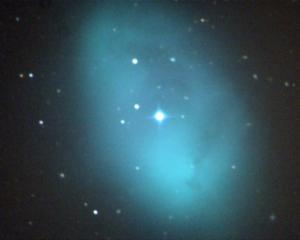
Often referred to as the "Evening Star," the second planet from the sun casts a serene, silvery glow across the rippling waters of our harbour. This planet reflects an ethereal purity and brilliance that humans have venerated since prehistoric times.

For me, this cosmic display offers a poignant contrast: the tranquil beauty of Venus juxtaposed with the unsightly glare of urban lights. Sunlight reflected off the planet’s thick, cloud-covered atmosphere streams through space towards us from millions of kilometres away.
The simplicity of its presence— steady, unchanging, and elegant — contrasts sharply with the light pollution surrounding our harbour.
Don’t get me wrong: I understand humans need lighting at night. We are so reliant on sensing the world visually that without it, many people feel unsafe or insecure. But does artificial lighting have to be so darn unattractive?
It seems to this sad stargazer that street lamps have proliferated to an unnecessary and seemingly random extent. The shared pathway around our harbour has opened our eyes to the beauty of our city, but at night its artificial lights paint the land and sea with harshly coloured light-graffiti, and reflections that are visible for miles. Their unyielding brightness competes with the harbour’s serene splendour.
To me, the magnificent sight of Venus highlights the ugliness of our built environment at night.
Its appearance is a potent reminder that poets and lovers have gazed up at this planet and found meaning. It also serves as a beacon of hope, reminding us that we can achieve a more pristine night sky, one where bright stars and planets are visible to the naked eye.
Ōtepoti Dunedin has a very special geographical position. The Milky Way is visible from the Octagon, and the spectacular nightly visuals only improve as you venture out of the city lights — to Hoopers or Papanui inlets on the Otago Peninsula or up to Aoraki Mount Cook. However, development has had a detrimental effect on our region’s ability to claim "dark sky" status and attract keen stargazers from around the world.
It’s not too late to reverse the encroachment of urban lighting. Clever designers have come up with ways to ensure safety at night, while minimising misdirected glare.
Venus should inspire us to strive to restore our harbour to a backdrop worthy of it. We can do better, and we should.










